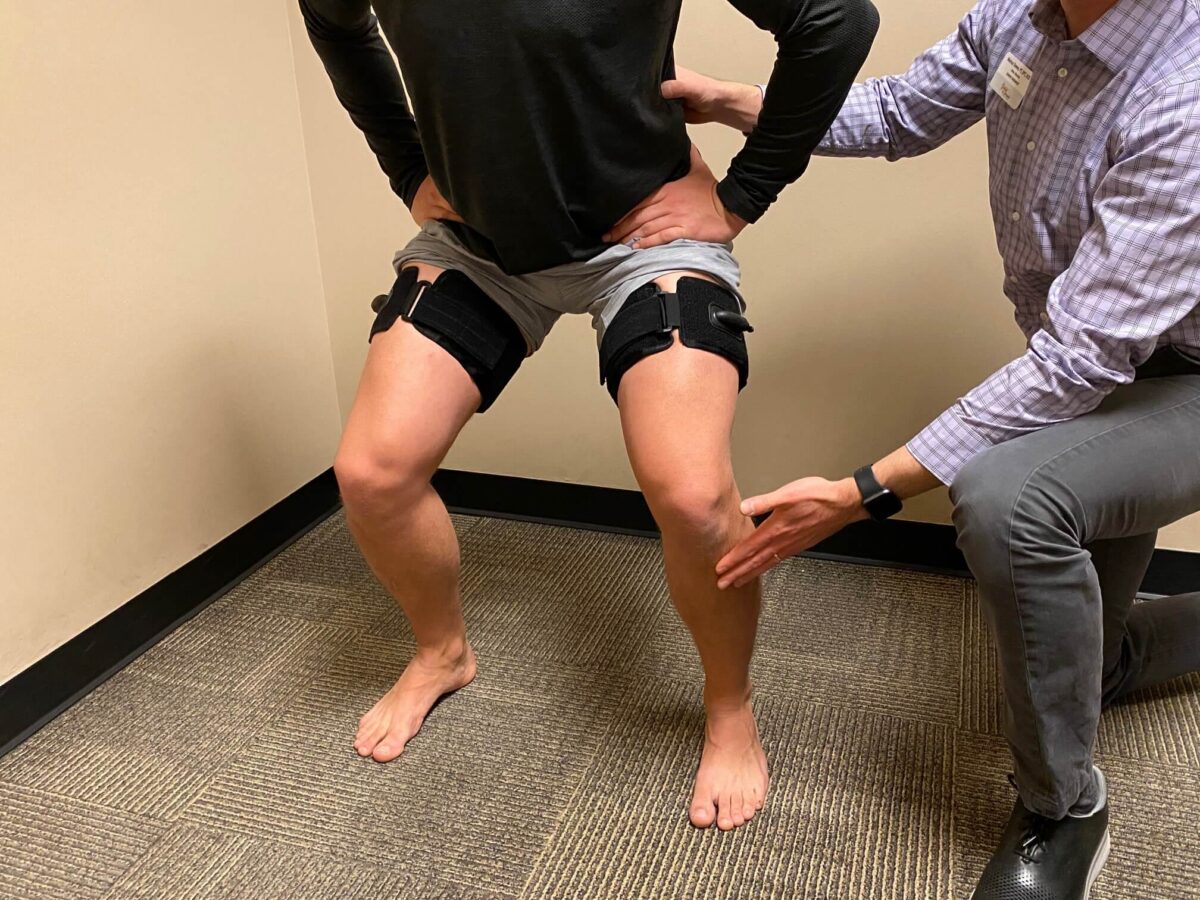
Blood flow restriction training is a promising treatment often used in physical therapy to increase muscle strength without putting undue stress on the body. It is shown to be effective for combatting muscle atrophy in physical therapy patients who are rehabbing from surgery or an injury.
Patients with conditions that make them susceptible to muscle mass loss but cannot tolerate high-intensity exercise may also benefit from blood flow restriction. It’s also gaining popularity with elite athletes looking to improve their performance without depleting their bodies. Keep reading to learn more about this innovative treatment and how it may be the key to maintaining muscle mass and accelerating your recovery.
You may have noticed some professional athletes and bodybuilders sporting tourniquet-like cuffs on their arms or legs in recent years. These bands are part of a unique technique called blood flow restriction (BFR) training. Developed by Japanese physician Yoshiaki Sato, MD, PhD in the 1960’s, BFR triggers muscles to work harder—but at a lower intensity—for greater results.
BFR uses a specially-designed restrictive cuff to apply pressure to the affected limb. This pressure slows blood coming to and going from muscles located below the compressed area. During training, periods of restriction are alternated with rest periods where blood flow is restored.
This creates a low-oxygen environment which triggers muscles to work harder and increases the synthesis of protein to promote tissue healing and growth—without the need for additional loads or the added risk of injury.
BFR is not designed to be painful but may create other symptoms similar to the sensations you may experience after a workout. To give you an idea of what it feels like, think of the sensation of wearing a blood pressure cuff. As the BFR cuff inflates, you may feel a bit of pressure at the site.
During your workout, you may feel a slight burning sensation or heavy feeling in your limbs, as if you were climbing a steep hill. Soreness after a workout is also possible. Basically, BFR feels a lot like any strength training you’ve done before. Always tell your physical therapist if you have severe pain or discomfort.
BFR is one of many physical therapy techniques that can benefit patients of varying ages, abilities, and stages of life.
You might be a suitable candidate for BFR training if you:
Never attempt BFR without the guidance of a physical therapist and check with your healthcare provider to ensure BFR is appropriate for you. It is generally not advised for people with blood clotting disorders, bleeding disorders, hypertension, obesity, infections in the affected area, and some other conditions.
Research on the benefits of restricted blood flow therapy is very encouraging, but not all physical therapists are trained and certified in this form of therapy. Find a clinic near you that offers the latest, evidence-based physical modalities to help you achieve your health and wellness goals.

